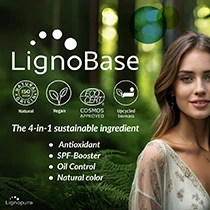BASF partners with EU Chemicals Agency to advance alternatives to animal testing

06 Feb 2024 --- The European Chemicals Agency (ECHA) is taking steps to reduce the use of animal testing for chemical safety assessments.
As a participant in a new consortium, BASF is responsible for assessing New Approach Methodologies (NAMs) as potential substitutes for animal testing. The chemicals company says it will scientifically assess the reliability and relevance of these methodologies to promote their future use and reduce the number of animal experiments required.
The consortium is led by the Fraunhofer Institute for Toxicology and Experimental Medicine (ITEM), Germany, and consists of BASF Metabolome Solutions, Germany, and Michabo Health Science, UK. The University of Birmingham, UK, Novogene Europe, BioClavis and the Experimental Toxicology and Ecology Department at BASF are additional partners.
The research will assess molecular biological technologies (toxicokinetics and omics) to predict the properties of chemicals without enough safety data. These technologies analyze gene activities and metabolic processes in cultured cells or organisms, providing insights into potential hazards. It also looks at how substances behave in bodies using computer physiologically based kinetic (PBK) models.
“This approach is already being used to close data gaps in registrations under the EU chemicals regulation REACH. For example, we would like to expand it further through molecular biological methods. If grouping and read-across are correctly applied, testing every substance on animals is no longer necessary. We will, therefore, be able to further reduce the number of animal studies and the costs for safety assessments,” says the toxicologist professor Hennicke Kamp, managing director at BASF Metabolome Solutions.
Personal Care Insights talks to Tomasz Sobanski, team leader for Alternative Methods in the Computational Assessment and Alternative Methods Unit at ECHA, about employing molecular biological techniques to shift away from putting animals through cruel chemical testing.
To help replace animal testing in the cosmetics industry, what efforts is ECHA making to incorporate the consortium’s results?
Sobanski: ECHA is actively contributing to the roadmap toward replacing animal testing in chemical safety assessments (The Commission roadmap for phasing out animal testing in chemical safety assessments). The development of the roadmap is part of the Commission’s response to the European Citizens’ Initiative “Save Cruelty-free Cosmetics — Commit to a Europe without Animal Testing.”
 Tomasz Sobanski, team leader for Alternative Methods in the Computational Assessment and Alternative Methods Unit at ECHA (Image credit: ECHA).We intend to incorporate all the experience and learnings from our scientific projects and collaborations into this work to make sure that phasing out animal testing can be done as quickly as possible, smoothly and responsibly.
Tomasz Sobanski, team leader for Alternative Methods in the Computational Assessment and Alternative Methods Unit at ECHA (Image credit: ECHA).We intend to incorporate all the experience and learnings from our scientific projects and collaborations into this work to make sure that phasing out animal testing can be done as quickly as possible, smoothly and responsibly.
What role does ECHA play in promoting the use of molecular biological methods?
Sobanski: We believe that if we want to move away from animal testing-based hazard assessment, we need to start characterizing hazards using molecular data instead of (non)observed adversity at the organ or tissue level.
This is not a straightforward transition, as multiple challenges need to be addressed first. Therefore, ECHA has been very active in identifying and communicating them over the last few years. For those identified, ECHA addresses them using existing collaborations, EU projects and ECHA-funded research.
In addition, ECHA has formulated its overall research needs, including the development of NAMs, in its “key areas of regulatory challenge” report. This document clarifies areas where ECHA believes further development is urgently needed.
How does ECHA develop guidelines for predicting chemical properties without sufficient safety data?
Sobanski: Under the EU’s chemicals legislation, ECHA’s role is to ensure that companies provide the data on chemicals they manufacture or import to the EU market as required by the law. While doing this, we also advance the development of methodologies to predict substance hazard properties without animal testing.
In addition, ECHA is also actively contributing to key EU and international initiatives aimed at developing alternatives to animal testing. Our main role is to explain the regulatory context and needs, increasing the chance that solutions developed or proposed will be suitable for regulatory applications. Such contributions include PARC, Horizon 2020 projects aggregated within the ASPIS cluster and the international cross-governmental initiative APCRA.
 ECHA’s NAMs workshop in May 2023 (Image credit: ECHA).Finally, once methodological developments are mature enough to be considered for regulatory use, we ensure they are also discussed at the OECD level. Over the last four years, we have initiated multiple projects at the OECD level, like the OECD omics Reporting Framework, the QSAR Assessment Framework or the latest one related to best practices for omics sampling.
ECHA’s NAMs workshop in May 2023 (Image credit: ECHA).Finally, once methodological developments are mature enough to be considered for regulatory use, we ensure they are also discussed at the OECD level. Over the last four years, we have initiated multiple projects at the OECD level, like the OECD omics Reporting Framework, the QSAR Assessment Framework or the latest one related to best practices for omics sampling.
How does ECHA utilize the consortium’s findings to reduce reliance on animal studies?
Sobanski: This contract aims to get regulatory accepted NAMs for omics technologies and toxicokinetics, namely supporting the development of OECD guidance. After regulatory acceptance, such NAMs help to reduce the need for animal studies conducted by the industry as part of their safety assessments for chemical substances.
The work procured via the newly established scientific framework contract is of the most practical nature (among all our activities). It has a high potential for direct regulatory applications in the short- to midterm. For example, work on guidance for omics sampling, once endorsed by the OECD, can be directly used to generate samples suitable for various types of omics analysis.
 Omics technologies offer insights into the safety assessments of chemical substances without relying on animal experiments.This data can then be utilized to identify certain hazards (like endocrine disruption or carcinogenicity) or as supporting evidence for grouping and read-across. However, we need to understand better how it can work in practice. For this reason, we have established a second contract.
Omics technologies offer insights into the safety assessments of chemical substances without relying on animal experiments.This data can then be utilized to identify certain hazards (like endocrine disruption or carcinogenicity) or as supporting evidence for grouping and read-across. However, we need to understand better how it can work in practice. For this reason, we have established a second contract.
Finally, to address systemic toxicity in a non-animal model, you must incorporate information on how substances will behave in the organism. To characterize that, we need toxicokinetic parameters and PBK models, which is the scope of a third contract.
How did you select the organizations involved in the research project?
Sobanski: In 2023, we published an open call for tenders for this framework contract, and the successful candidate was selected by evaluating the received tenders according to the criteria stated in the procurement documents.
We wanted contractors with well-established scientific expertise, a good understanding of regulatory systems and the ability to generate molecular data. During the evaluation process, it became clear that the consortium led by Fraunhofer ITEM has an impressive portfolio and experience in all these areas. We look forward to a fruitful and successful collaboration.
How does ECHA support the evaluation of NAMs for chemical safety testing?
Sobanski: ECHA plays an active role in developing NAMs to replace tests on animals. We, for example, contribute to several OECD projects, participate in international research projects bringing regulatory needs to the discussion and commission regulatory research, as in this case (ECHA research project - Fraunhofer ITEM).
Last May, we organized a workshop to discuss the critical needs to move toward an animal-free regulatory system for industrial chemicals, and last autumn we launched a report for advancing regulatory relevant scientific research to develop the chemicals regulations of tomorrow, including an aim to avoid unnecessary animal testing.
By Venya Patel












